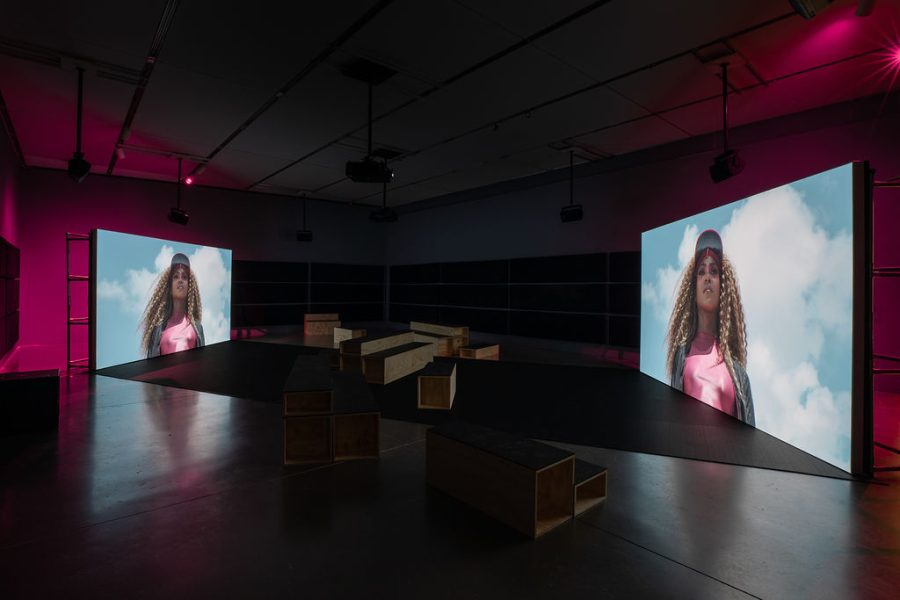
Installation view, Bárbara Wagner & Benjamin de Burca: Swinguerra, the Institute of Contemporary Art/Boston, 2022. Photo by Mel Taing.
Collaborating since 2011, Bárbara Wagner and Benjamin de Burca create works in video, photography, and installation that explore contemporary histories of underground dance and musical genres. Frequently made in collaboration with cinematographer Pedro Sotero, these moving-image works, which they refer to as “documentary musicals,” often center on urban subcultures in the South Atlantic diaspora, from the Franco-Indo creole musical genre maloya to frevo dancers and brega singers in Recife, Brazil, where the artists live and work. Constructing images together with performers, their approach merges the cinematic with the fictional, documentary, and ethnographic to address questions of surveillance, visibility, and creativity in an increasingly connected, postcolonial world. A recent acquisition and room-filling installation on view for the first time, Swinguerra (2019) focuses on disadvantaged queer communities of color in Recife, Brazil, with an emphasis on transgender and nonbinary performers. The film features three contemporary dance styles—swingueira, brega funk, and passinho da maloca—as performed by three competitive dance groups. These mixed dance styles recall Brazil’s colonial and slave trade history, where music and dance functioned as discreet methods of organizing politically under oppressive regimes. Fast-paced, athletic, sexy, dreamlike, and aggressive, the dance styles, like the music, make Swinguerra an exhilarating and unforgettable viewing experience, illustrating how dance and music offer rich sources of agency, resistance, and community for marginalized individuals.
Note: Swinguerra contains a brief sequence of flashing light which may not be suitable for people with visual sensitivities.